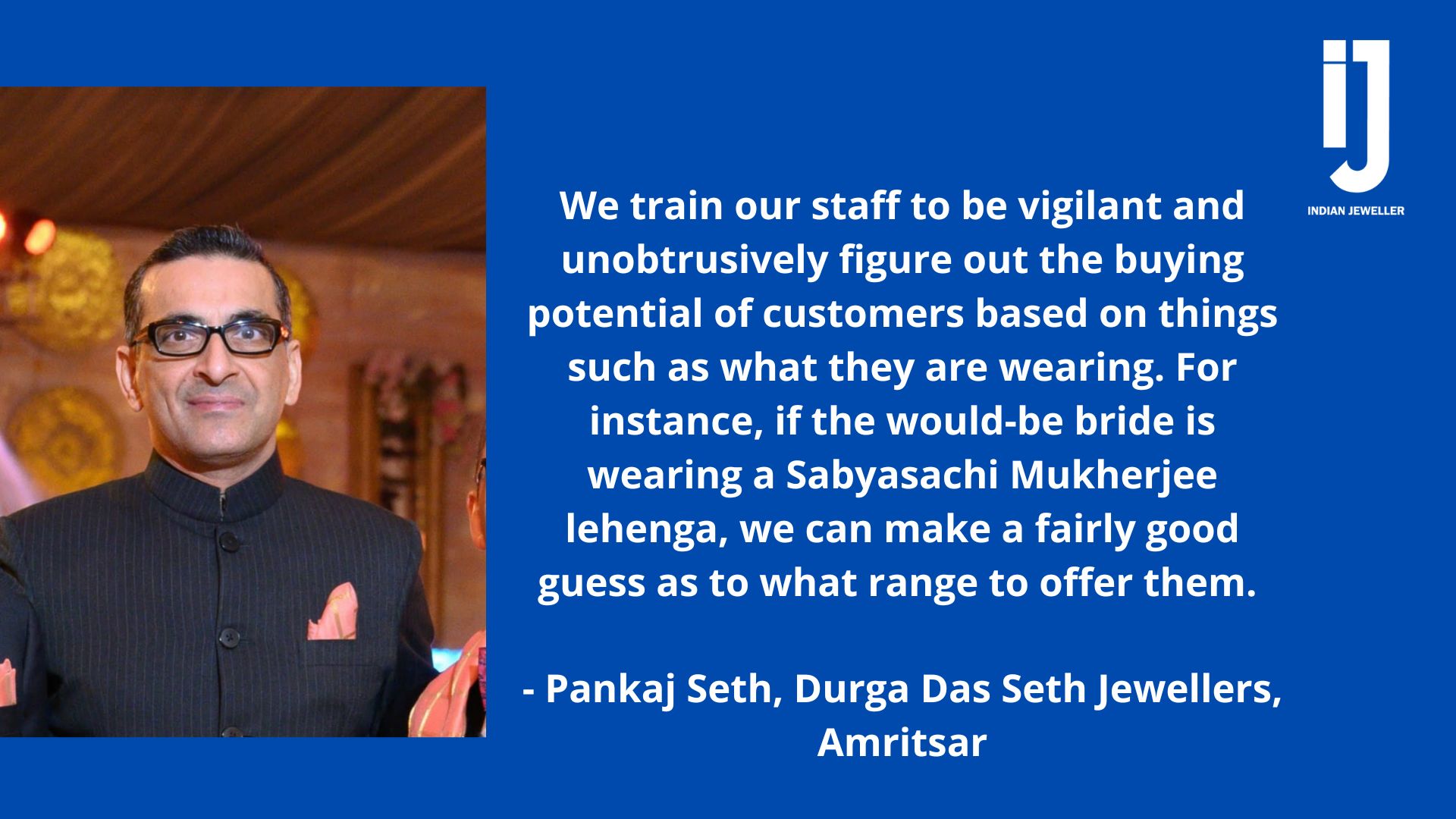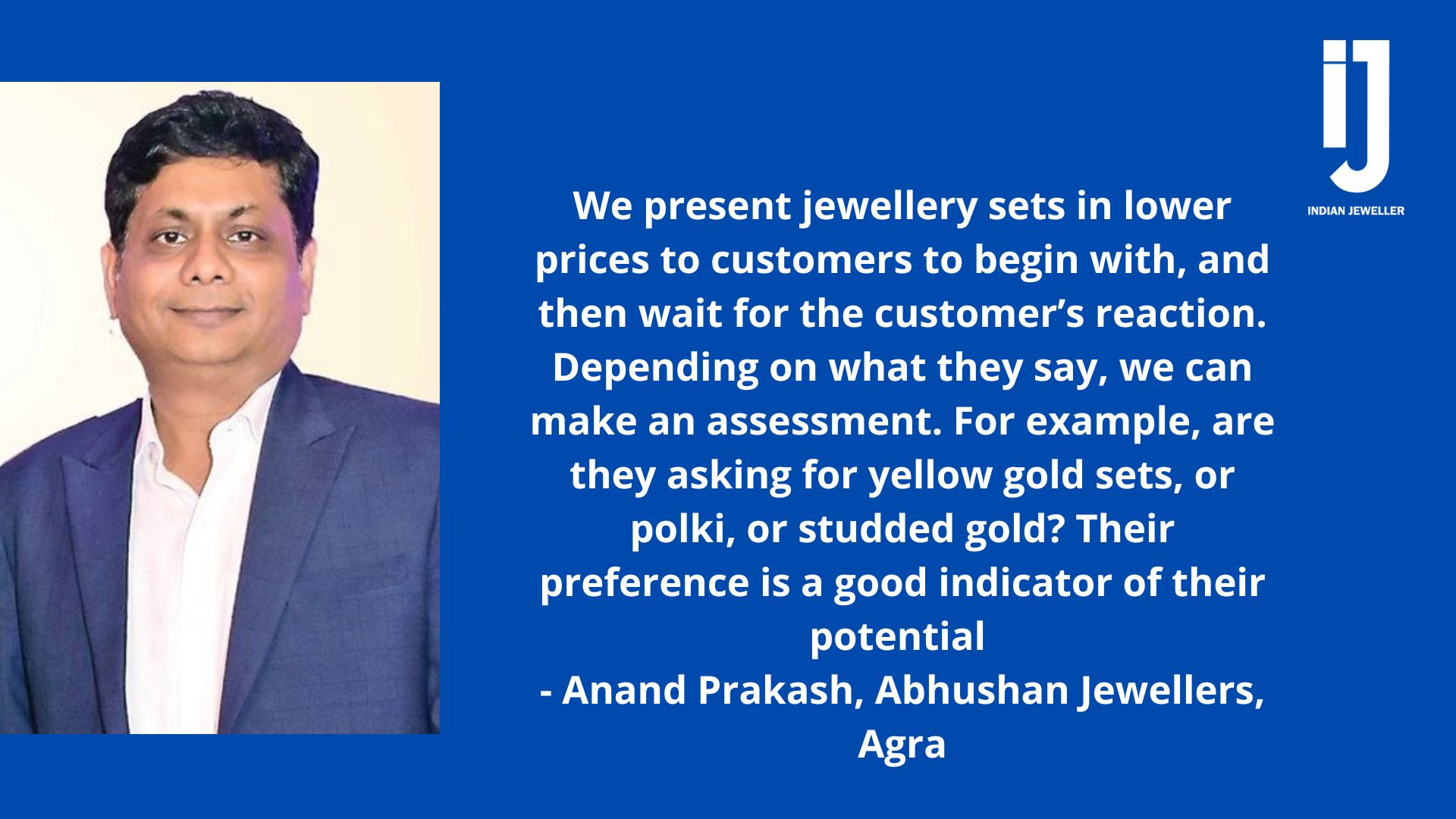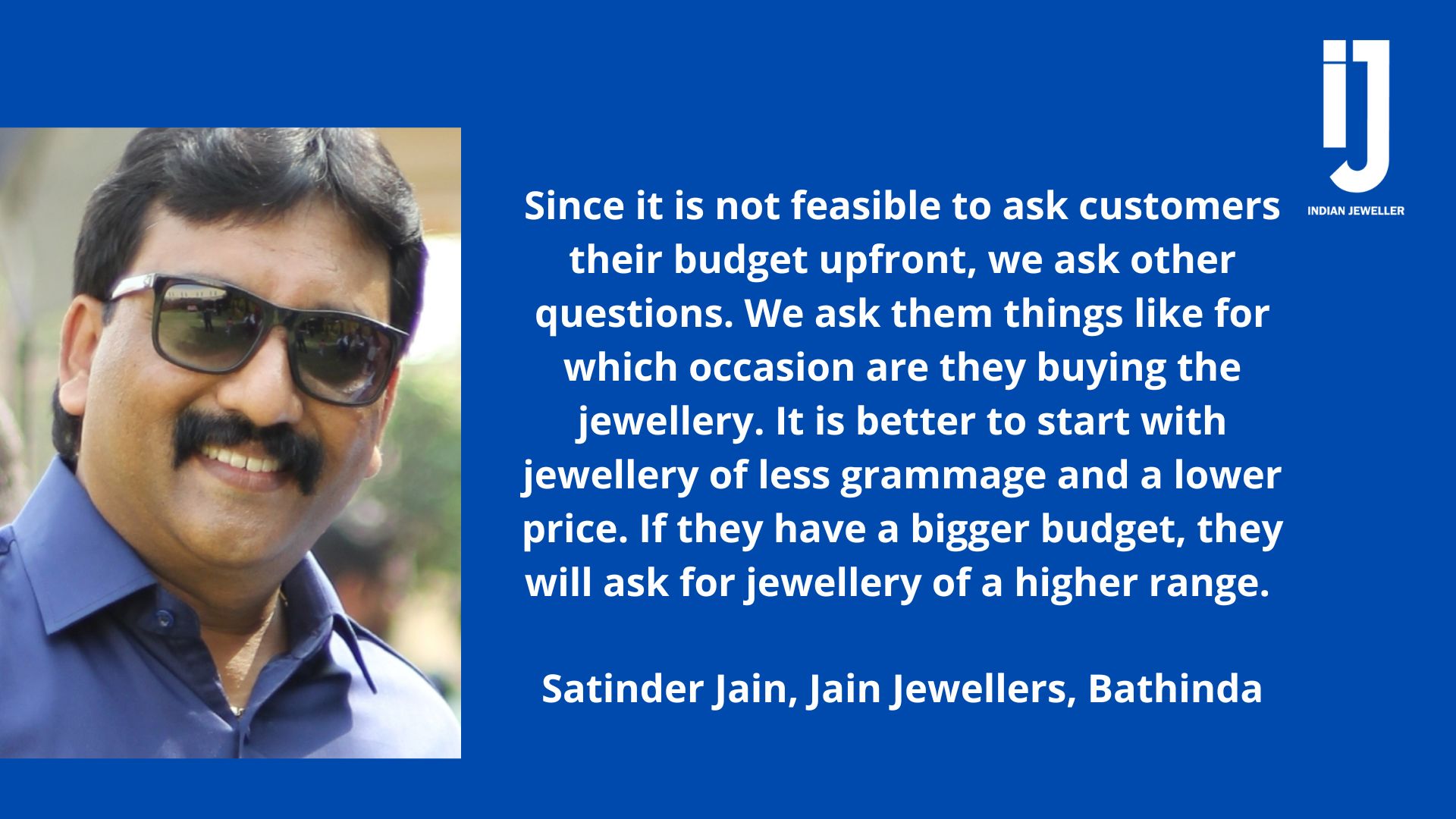Gauging the buying capacity of customers is a complicated issue – retailers have to make an assessment based on the body language and reactions of buyers, as well as their attire and accessories, says Suneeta Kaul

Consider a scenario – a family of many members walks into your store, and asks to see bridal sets. Where do you start? What do you show first? How do you engage the interest of the family long enough for the members to arrive at a consensus and finally seal the deal?
Trying to figure out the buying potential of customers and their budget is difficult. Obviously, retailers do not want to embarrass their customers by asking indelicate questions, such as, “What is your budget?” They have to work their way around that query, and figure out the answer without asking the question. But how do they do that?

Says Pankaj Seth of Durga Das Seth Jewellers, Amritsar, “When customers walk into our showroom, we have to make our assessment based on many factors. We train our staff to be vigilant and unobtrusively figure out the buying potential of customers based on things such as what they are wearing. For instance, if the would-be bride is wearing a Sabyasachi Mukherjee lehenga, we can make a fairly good guess as to what range to offer them.
“But that’s just one of the things. Amritsar is not a very big city – we know most of the customers and their families. And that helps us to understand what they want. Besides, the kind of jewellery the customer asks for is also a relevant factor. Are they straight away asking for jadau, polki, plain gold, antique? That too helps us assess their budget.”

There is no particular way to determine how much customers are willing to spend on jewellery. It is a combination of various things. According to Anand Prakash of Abhushan Jewellers, Agra, “Assessing the buying potential of customers is easier when you already know them. We get all kinds of customers, some come from faraway places, some come from rural areas, others from urban centres. We do not always know what they want. We have trained our staff to look out for indicators such as what the customer is wearing, what kind of jewellery the ladies are already wearing, what they are looking at in the display area, which vehicle they drive in. These are good reference points.
“When we are not able to make a good guess, we present jewellery sets in lower prices, and then wait for the customer’s reaction. Depending on what they say, we can make an assessment. For example, are they asking for yellow gold sets, or polki, or studded gold? Their preference is a good indicator of their potential.”

Retailers operating in smaller cities have an advantage in that they know their customers well, and have a good idea of their background. Explains Satinder Jain of Jain Jewellers, Bathinda, “We know the capacity of most of our customers as they have been with us for many years, and sometimes, several generations. Even so, we need to get an idea of how much they have earmarked for a particular purchase. Since it is not feasible to ask them their budget upfront, we ask other questions. We ask them things like for which occasion are they buying the jewellery. It is better to start with jewellery of less grammage and a lower price. If they have a bigger budget, they will ask for jewellery of a higher range. But if we start with a higher price, then it is embarrassing for them to say it is out of their budget. It is always better to go from lower to higher, rather than the other way round.”

Understanding consumer psychology and reading the cues correctly works out well for retailers. “One has to read customer behavior, and then make an assessment. We have to figure out their budget from their reactions, their taste and the style of jewellery they ask for,” says Priyanka Chopra of Chopra Sons Jewellers, Ludhiana, adding, “Today’s brides go more for minimalist, but edgy jewellery. They don’t just want a heavy, traditional set to be worn only at the wedding. They prefer jewellery that is durable, which they can wear more often. The price range is generally between Rs 10 lakh and Rs 15 lakh. But it can vary. So, we generally talk to the customers. Simple chit-chat with them gives us cues as to what price range they will be comfortable with. Sometimes, what they choose exceeds their budget, but we always offer to customize the jewellery, and alter its shape or size or grammage.”
It is safe to conclude that there is no silver bullet to determine how much customers are willing to spend on the jewellery they have come to buy. It is mostly a matter of reading their body language and their reactions, and an overall assessment based on what they are wearing, and the kind of accessories they have.
Be the first to comment